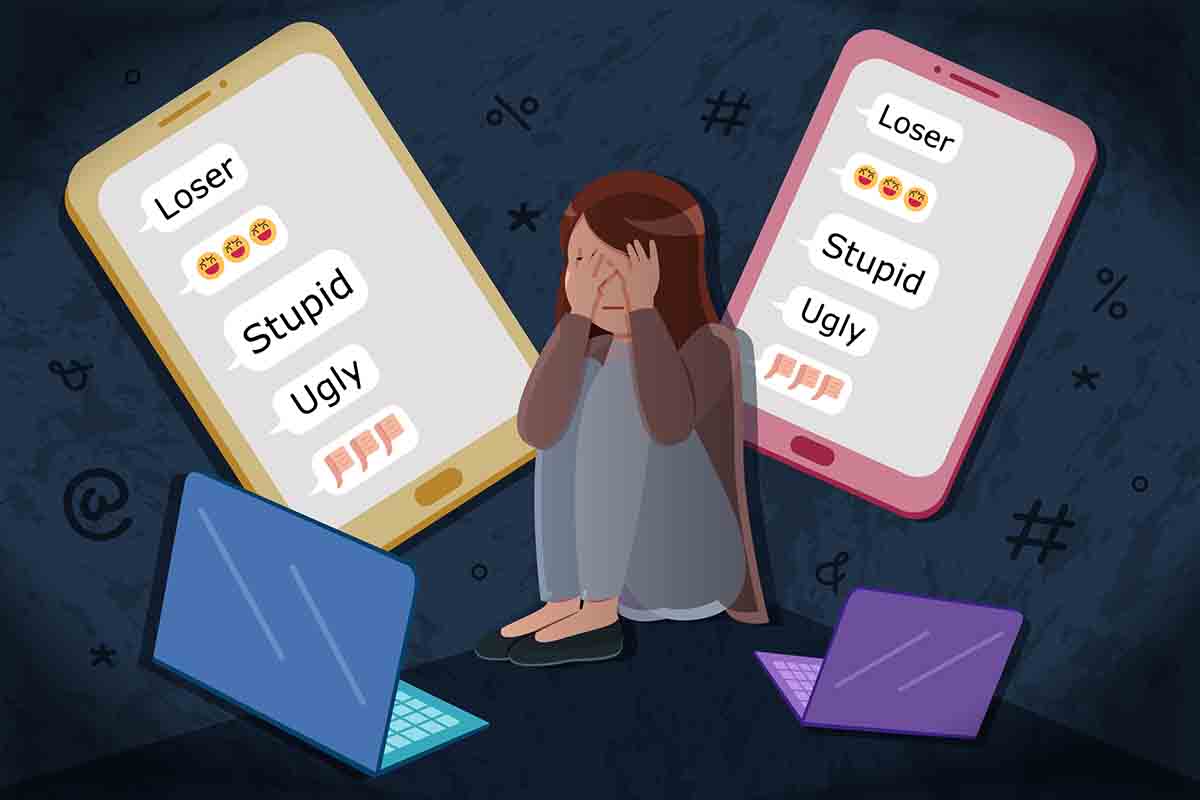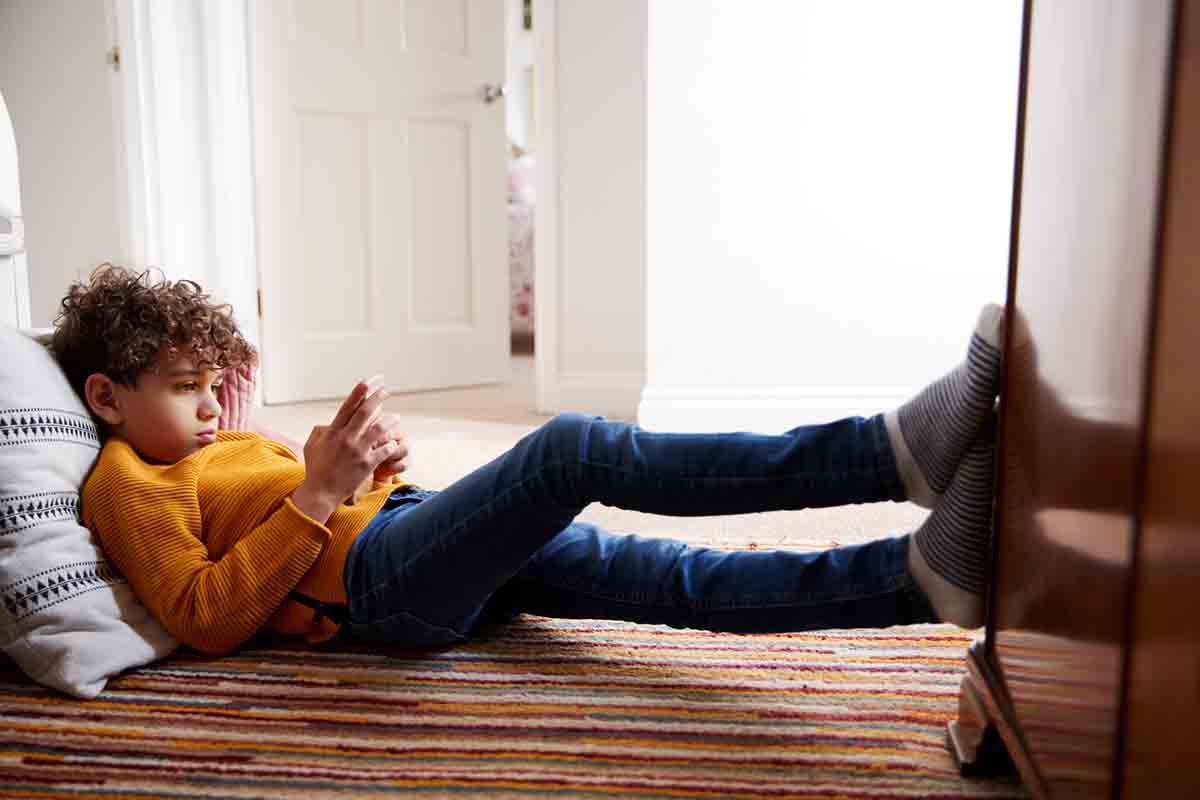5 Ways Social Media Affects Kids' Mental Health (And How Parents Can Help!)

The recent Facebook whistleblower scandal in 2021 revealed that Facebook had tons of research that social media platforms like Instagram are toxic to the mental health of kids and teens. The whistleblower documents discussed how photo sharing apps like Instagram can negatively impact teens’ body image and self-esteem. Recently, the U.S. Congress accused tech giants like Facebook of prioritizing profits over safety when it comes to teens and children.
With recent studies showing how social media negatively affects kids’ mental health, body image, and social skills, parents are more concerned than ever about social media sites and the impact of screen time and the internet on their kids and teens. This is the first generation of children to have grown up with the internet and social media as a constant presence in their life from a young age. Many parents are concerned with how growing up with the internet will impact Gen Z and younger kids later in life.
Even for those of us who had the internet at the tail end of our childhood and adolescence, social media was not in existence until the early 2000s. Even in the MySpace days, these websites were mostly just another source of entertainment and communication. However, now online communities and online relationships play a major part in most kids’ lives. As parents, we have no real-life childhood experience dealing with social media, smartphones, and cyber-bullying, making it difficult to know how to help our kids.
The COVID-19 pandemic only increased the amount of time young people (and adults) spent on social media platforms, and experts have pointed out a correlation between more screen time and low self-esteem. Our social media feed is a constant barrage of keeping up with the Joneses. And as hard as it is for us as adults to stay positive when it seems our entire friend list leads perfect lives, kids and teens have a much more difficult time separating a social media persona from the real world.
Social media does have some positive aspects. For example, it allows us to communicate and see each other, if not face-to-face, at least over a screen, and can be a valuable tool for outreach, community building, and social interaction; however, its use must be tempered and managed in a healthy way.
As parents, it can be challenging to know where to turn for help, so in this article, we have broken down five different ways social media affects our children’s health and ways to help.
1. Social Media Causes Low-Self Esteem

The effects of social media and self-esteem are probably the most widely documented area concerning social media and mental health problems. Scrolling through the average person’s Instagram feed usually displays countless pictures and posts of people having fun. People share pictures of their new homes, posts about their seemingly perfect children, or how they just landed their dream job. While on the surface, the natural reaction is to be happy for those we care about, the deeper reaction is an immediate comparison to what they have that we don’t.
With the introduction of the social media age, teens aren’t only faced with social comparisons during the school day but on a 24-hour cycle. High school kids can share a Snapchat of their new Nike’s or the PS5 they got for their birthday in less time than it takes to count to five. Additionally, apps like Snapchat, which are meant to disappear, make it much easier for kids and teens to send negative pics, bully and emit peer pressure, all of which have negative consequences on a child’s self-esteem.
How to Help Kids Feel More Confident
To help your child who may be dealing with low self-esteem due to peer pressure or social media, maintain an open-door policy with your child. Let them know they can come to talk to you at any time about anything, and when they do, don’t become angry if they tell you something upsetting. Lashing out at your child for a mistake made will only serve to push them further away and more likely to hide important information next time.
If they do come to you with something heavy, try to reserve judgment and ask questions to further your understanding. Use open-ended questions like, “I am not sure I understand why you sent that text, can you help me understand better?” or “I don’t like you using those types of words so can you help me understand why you used them?” You don’t have to approve of their actions to support and help them through a difficult situation.
If you have concerns about your child being the victim or perpetrator of cyberbullying, check out the resources at stopbullying.gov for more help and ideas.
Additionally, You should build up your child with specific praise as much as possible. Notice them and what they do. For example, “Hey, I saw you took the trash out without my asking, thank you so much that really helps me out.” or “I notice you’ve been studying really hard for your math test; your dedication to your schooling is impressive.”
Even if your teen seems capable of pushing all of your buttons at once, and it may feel impossible to find something positive, but the small stuff adds up. “Thanks for washing your hands and coming to the dinner table when I asked; I enjoy sitting and talking with you at dinner.”
2. Too Much Screen Time Causes Sleep Issues

We’ve all heard the reports over the years to turn off our electronics at least one hour before bed (two is even better!) because the light emitted from electronics disrupts our circadian rhythm. Unfortunately, the same is true for our kids. Additionally, the stress and anxiety social media can cause also affects our children’s ability to fall asleep.
Lack of sleep leads to additional health issues and can affect your child’s academic performance, behavior, appetite, lead to depression, and have a negative effect on their overall wellbeing. In addition, the growing brain needs sleep to develop properly; the average child and teen need 9.5 hours of sleep to support development and maturation.
How to Help Kids Sleep Better
The easiest thing you can do is to set screen time limits, especially before bed. While it may be challenging at first, especially if your child has a computer to TV in their room, stick to the plan, and you will begin to see less and less resistance after a week or two.
If you’ve never set limits for screens in your home before, start with a family meeting to discuss the new policy. Make it clear that it will be happening and that it is not up for debate, but also listen and answer any questions or concerns your children may have.
Good sleep hygiene involves replacing screen time with something relaxing. Perhaps your child has an hour of quiet playtime with LEGOS, drawing, or reading. You could play a game or read together, or make that when bathtime happens.
If needed, use a timer device to turn off Wi-Fi in your home at a specified time; that way, they can’t get on even if they tried. You can also collect all phones and devices in a communal spot and lock them with a key.
It is essential you set the tone and the example for your children. For example, don’t tell them “no electronics,” and then go and watch TV, leaving them on their own. Yes, you are the adult and get to make the rules, but a good leader leads by example. Besides, you can always watch your favorite show after they fall asleep.
3. Social Media Dependence Leads to Less Independence

Screen time and the use of social media fall under passive activities and do not stimulate the growth or development of your child’s brain. In addition, watching TV and social media apps do not prompt children to engage in critical thinking or hands-on learning.
The American Academy of Pediatrics recommends no screen time for children under two, and children over two should have no more than an hour or two daily. Based on research by the APA, the average child aged 8-12 in the U.S. spends four to six hours a day using electronics; teens spend seven to nine hours daily.
Too much screen time contributes to behavioral problems, learning disabilities, attention deficit disorder, and deters overall cognitive development. Children are hands-on learners and they need experiences that engage and stimulate their brains.
The APA has recommended the following guidelines for children and screen time:
- For children under 18 months, avoid screen-based media except video chatting.
- For children 18 months to 24 months, parents should choose high-quality programming and watch with their children.
- For children 2 to 5, limit screen time to one hour per day of high-quality programming.
- For children 6 and up, establish consistent limits on the time spent using media and the types of media.
How to Help Kids Be More Independent
Not all screen time is terrible, and there are some ways parents can use it as a positive and productive learning experience. For example, turning screen time from a passive activity to an active one can stimulate a child’s brain and develop the critical thinking skills passive media suppresses.
- Watch programs together. Pause the TV and ask questions to prompt thinking
- Have post-movie discussions about the plot, characters, conflict, and resolution
- Act out stories or puppet shows based on their favorite shows and movies
- Use their favorite shows to expand their interests.
- If they love a dinosaur show, take them to a museum to see dinosaur skeletons.
- If they love music, enroll them in a dance or music class.
- Look for games and apps that engage critical thinking and problem solving
- Common Sense Media has a list of apps, games, movies, and TV approved for children
- Understand it’s OK for teens to engage in social media use and that technology is here to stay. Social media accounts are a way for adolescents to explore who they are and engage with peers.
- Talk to your child about their behavior online and what is and is not appropriate for them to view, do, post, and say.
- Help your child or teen understand the internet is forever. Everything they post will be part of their digital footprint.
- Be a part of your child’s social network so that you can view their posts when needed but don’t use it to spy.
- Install a monitoring app that will alert you if something questionable comes through but won’t invade your teen’s privacy
4. Fear of Missing Out (FOMO) From Too Much Time Online

For young adults and teens, fear of missing out or FOMO is a new style of social anxiety. It seems everything is published on social media these days: parties, sporting events, shopping trips, vacations, sleepovers, the newest shoes or video game purchases, etc. Our children view social media as their lifeline to the world, so when disconnected from social media they feel disconnected from life.
On the flip side, when we see all those around seemingly having a fantastic time, it ignites feelings of FOMO in us because our peers are experiencing something we’re not. A recent study showed that among millennials, the three things that cause the most FOMO when viewed on social media are vacations, parties, and food. When they experienced FOMO, it brought up envy, jealousy, and symptoms of depression.
How to Help
It’s important to help your child understand that the seemingly perfect aspect of social media is not real life. Ask them to reflect on what they post and share; many people choose only to share positive traits and keep the negative private; therefore, it is likely that all their peers have negative experiences; they’re just not public. Ask your child to reflect on all the positive aspects of their life. If they are old enough, they can start a gratitude journal.
Have open discussions about your child’s wellbeing and any impact social media has on them. Discuss the importance of needing to take breaks from time to time. Encourage them to unplug and get outside. Fresh air and physical exercise can mitigate the negative impact of social media and is crucial for teens’ mental health and physical wellness.
5. Decreased Physical Activity

It’s probably no surprise that there is a direct correlation between more screen time and less physical activity. Children and teens spend more and more time online and in front of screens and less time engaged in active play. In addition, people tend to eat and drink mindlessly while sitting in front of the TV or playing online, packing on more calories.
Too much screen time can affect your child’s ability to sleep, contributing to weight gain. Obesity and lack of physical activity lead to a myriad of health problems, including diabetes, heart diseases, respiratory issues, and depression.
How to Help Kids Get More Exercise
Encourage your child to get active by participating in it yourself. For example, you could take an exercise class together or go to the gym, have a dance party, or go for walks. If your child is inclined towards a specific sport or activity, sign them up for a season or some classes.
Set time limits for your child’s screen time to encourage them to get active. Even if they choose to spend their non-screen time drawing or building LEGOs, they are actively engaging in cognitive skill-building, which also battles depression and other negative thoughts associated with screen time.
Use screen time as an active activity. Some games encourage movement and dance, and countless dance and yoga workout videos are available online. Engage in fun physical activities with your child, which sets the example that physical health is essential.

